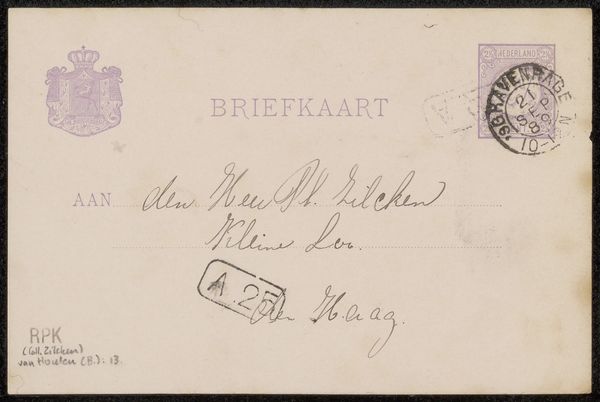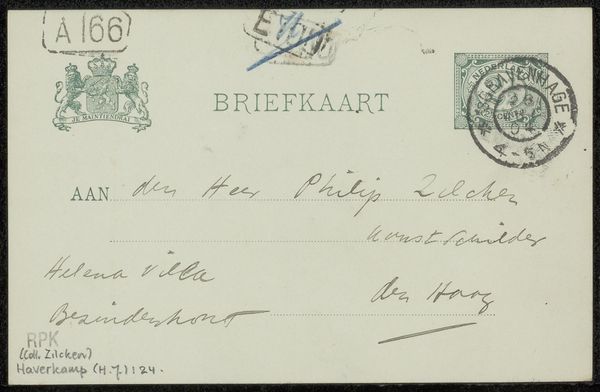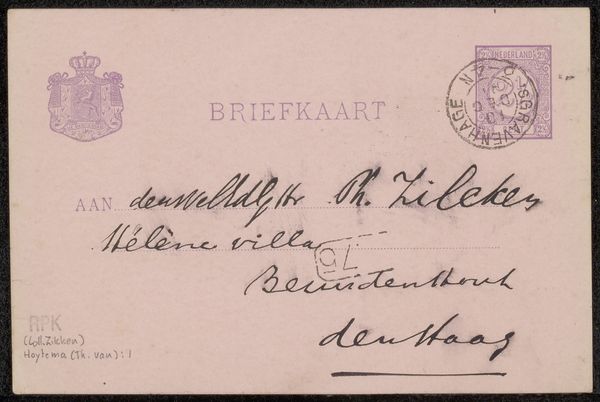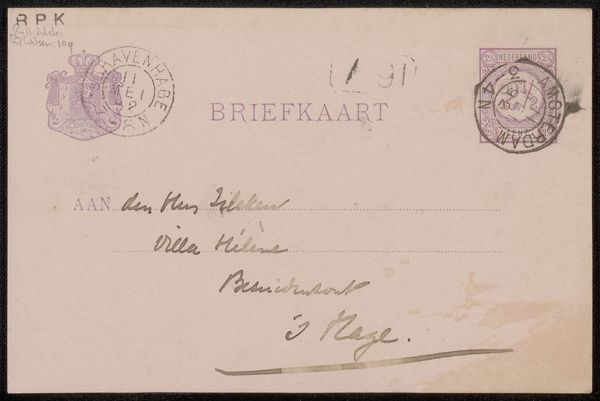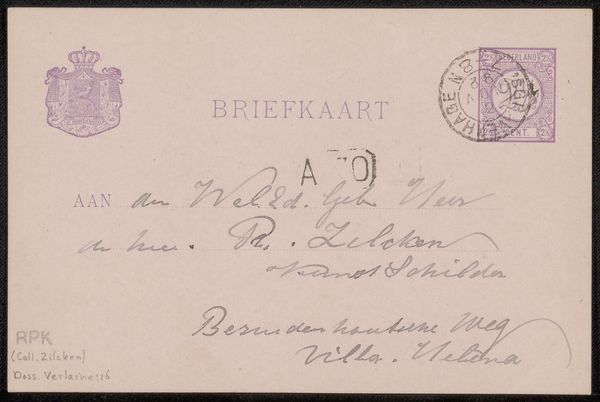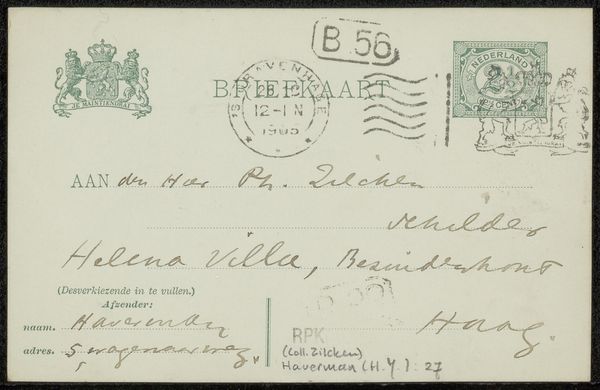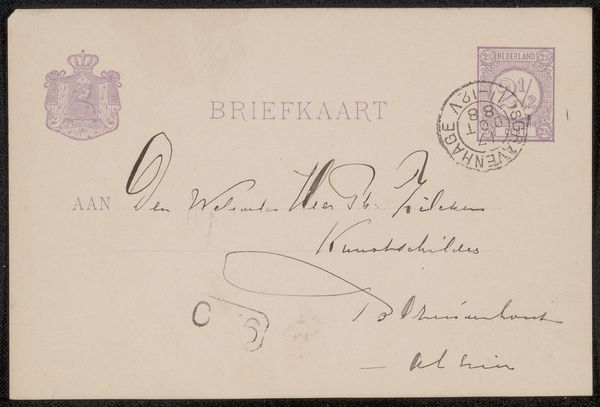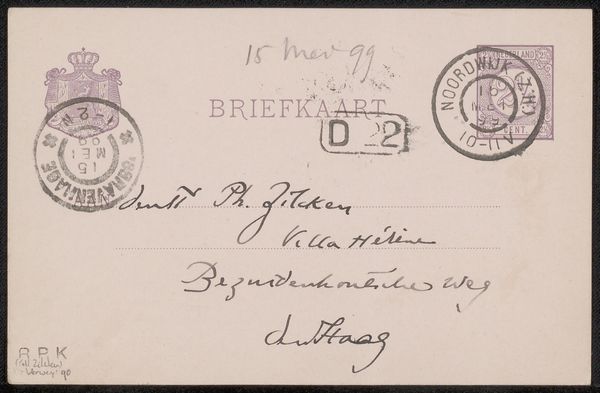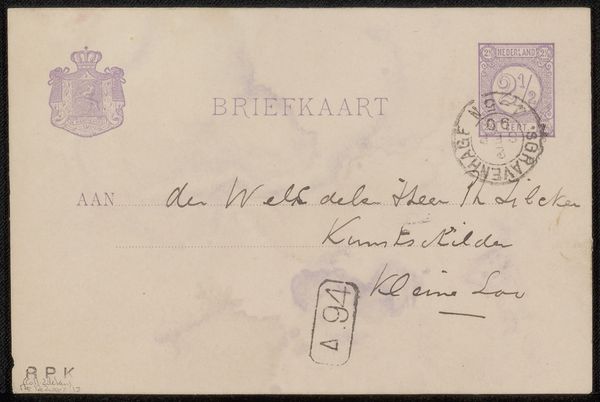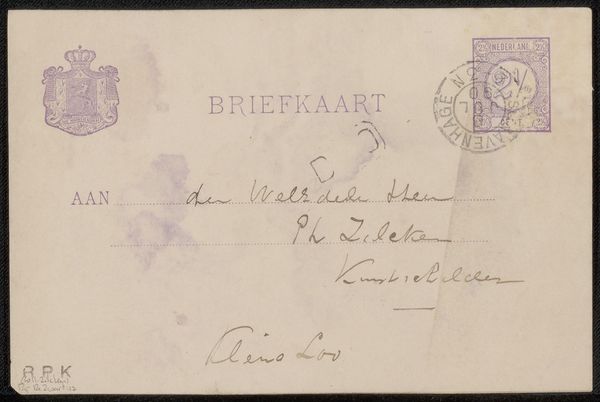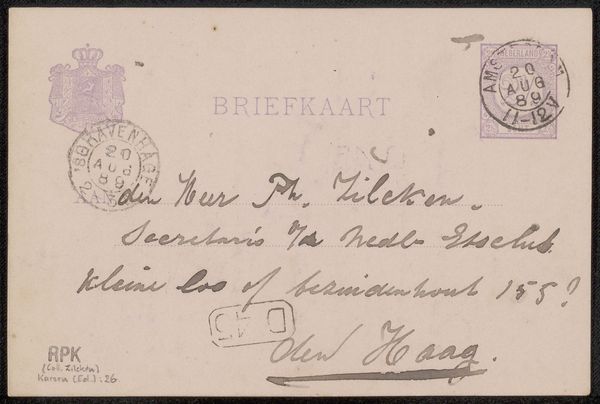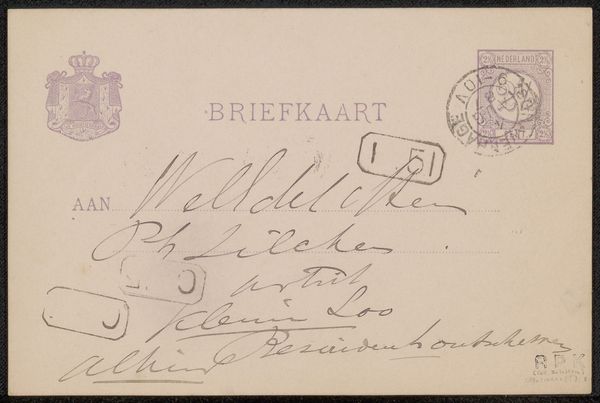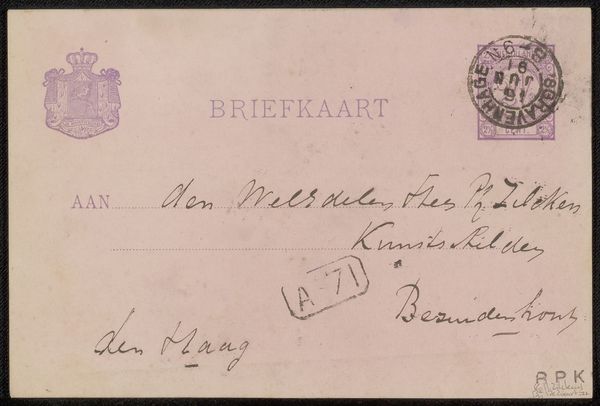
drawing, ink, pen
#
portrait
#
drawing
#
hand written
#
script typography
#
hand-lettering
#
old engraving style
#
hand drawn type
#
hand lettering
#
ink
#
hand-written
#
hand-drawn typeface
#
pen work
#
pen
#
handwritten font
#
post-impressionism
Copyright: Rijks Museum: Open Domain
Curator: This is "Briefkaart aan Philip Zilcken," a postcard dating back to sometime between 1890 and 1896 by Willem Witsen, currently held at the Rijksmuseum. The piece consists of ink and pen work on paper. What are your first impressions? Editor: Immediately, I'm struck by the intimacy. It's not a grand painting but a personal message, penned and sent. There’s a real sense of human touch in the handwriting itself; seeing the ink strokes feels almost like witnessing the movement of Witsen's hand. Curator: Exactly. The very medium, a humble postcard, speaks volumes. This wasn’t commissioned; it was created out of personal connection and the social customs of correspondence. It’s a physical piece of social history, detailing an exchange and likely social ties, right there. What kind of network did these postal exchanges enable? Who consumed it? Editor: It certainly highlights the significance of handwritten communication during the Post-Impressionist era. I find myself wondering about Philip Zilcken; how the politics of the art world impacted him. A small glimpse into the artistic dialogues, no doubt influenced by movements sweeping across Europe at the time. Curator: Precisely, we're dealing with handmade material here. Look at the postal stamp and markings, these things are themselves produced within certain logistical means. Its materiality isn’t about illusion; it’s about simple information conveyed through accessible materials. How does its handmade quality affect our viewing, considering our society’s reliance on mass-produced things? Editor: I imagine it had quite an impact for the recipient. In the present day, it encourages viewers to think about access, class, and cultural status. How would we address this postcard in current times, through various museum programming and accessibility initiatives? What stories might we tell from the handwriting, to further promote and engage various demographics of modern audiences? Curator: It seems like the simplicity of materials speaks to the practical function, to carry a simple handwritten message; something utterly ordinary made enduring by an artist’s hand and historical circumstance. Editor: Agreed, considering the political landscape and the way these artists were using available venues and social gatherings to expand their networks, it seems more like an invitation than merely correspondence. Curator: Looking closer allows me to really think about what it truly meant to be interconnected across geographical and political distance through these postal networks. Editor: And for me, this reveals an intimate narrative that’s also interwoven within a larger political and social context.
Comments
No comments
Be the first to comment and join the conversation on the ultimate creative platform.
